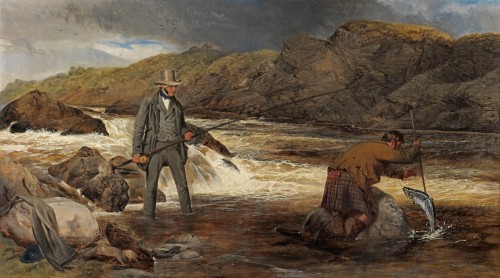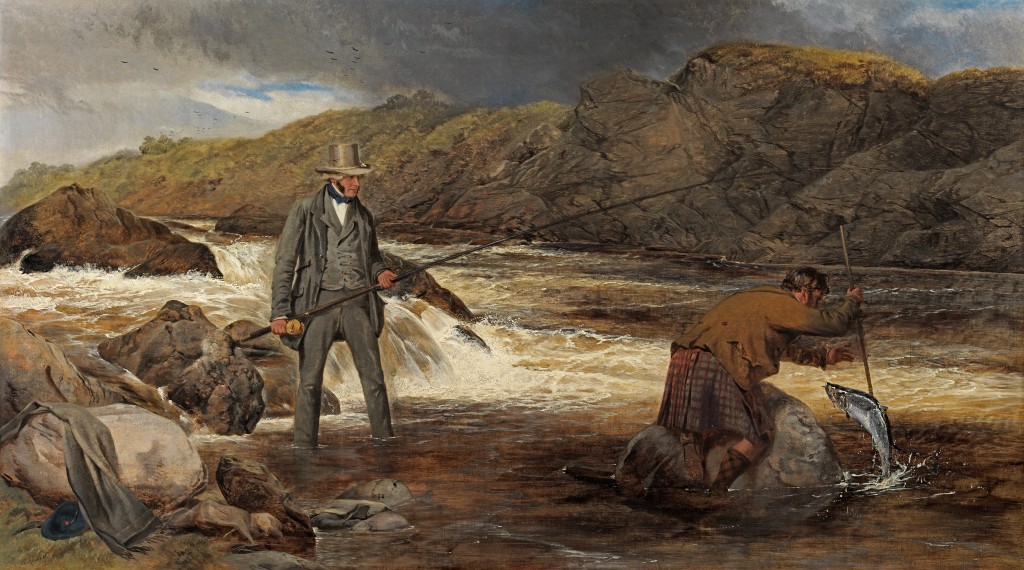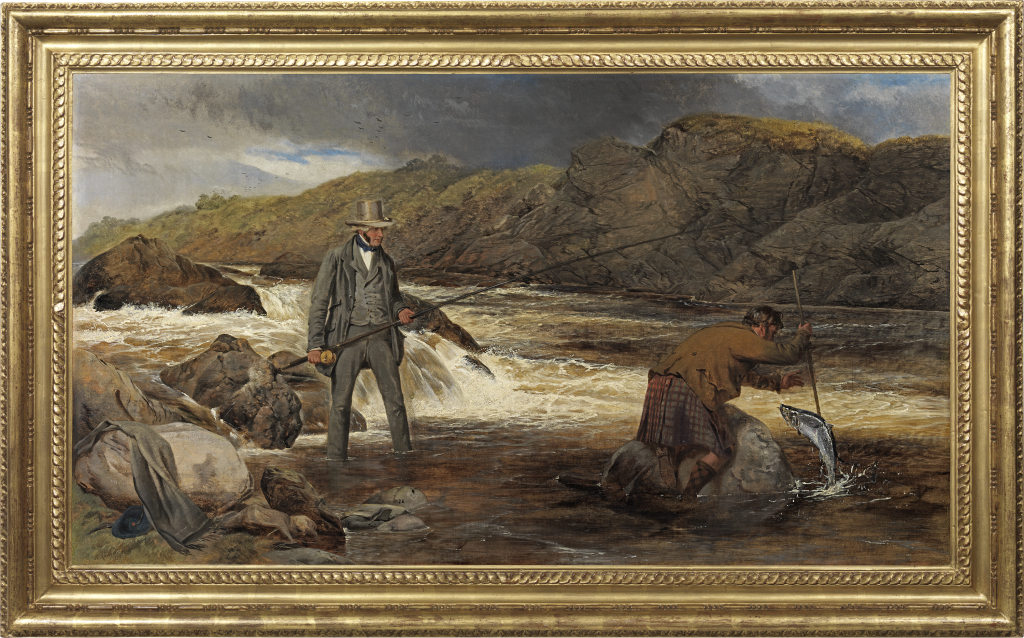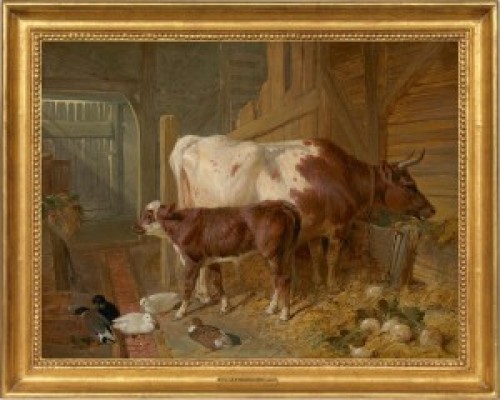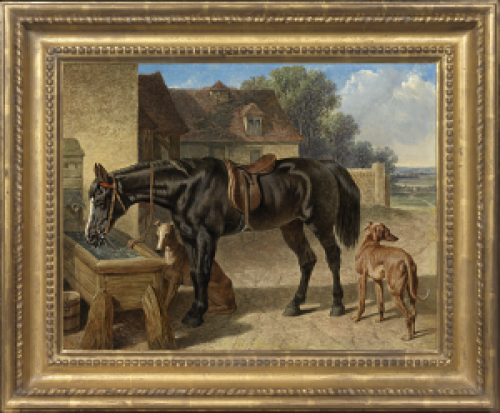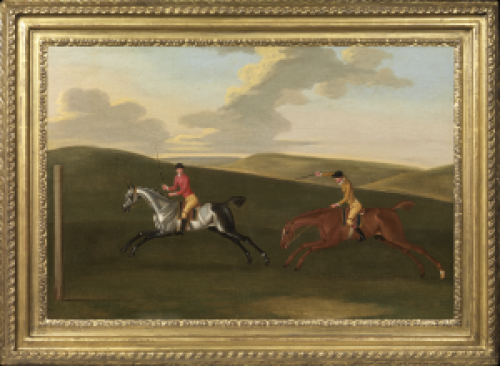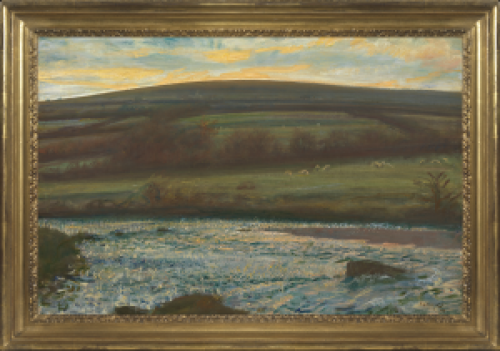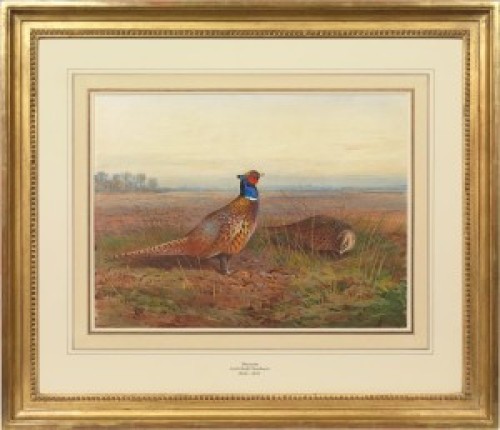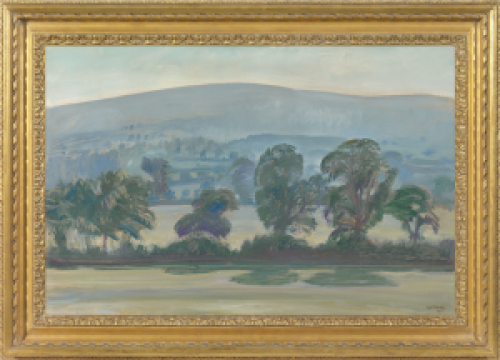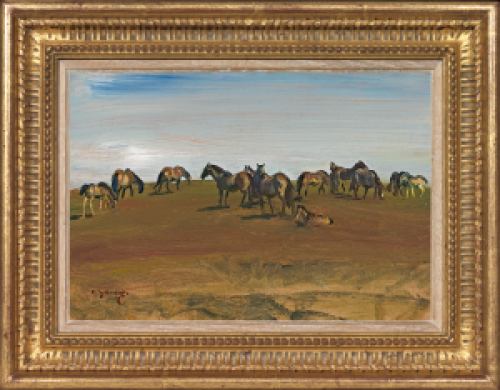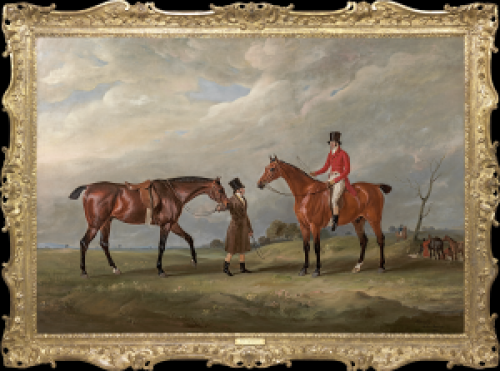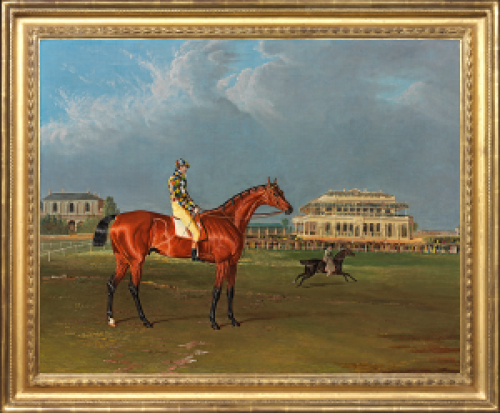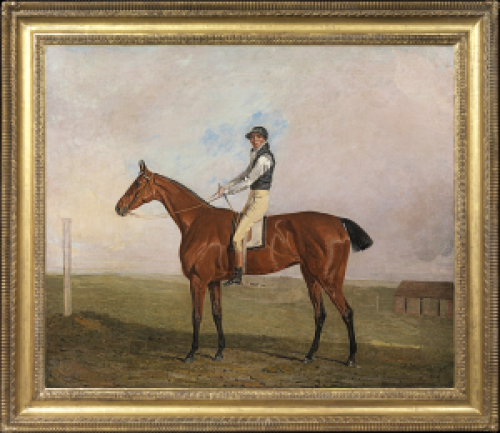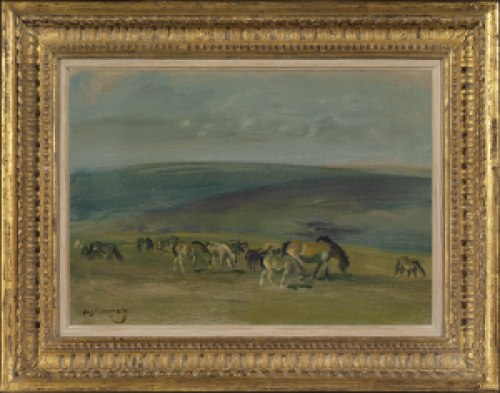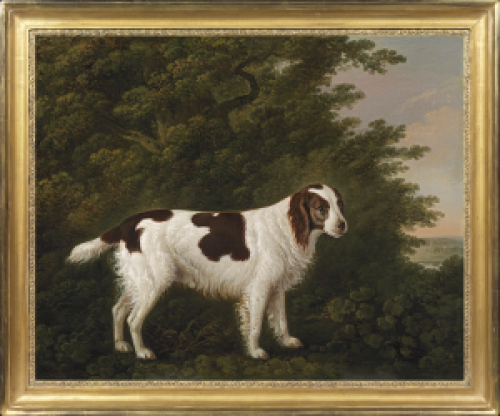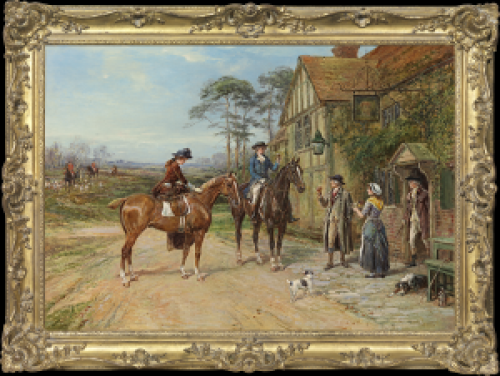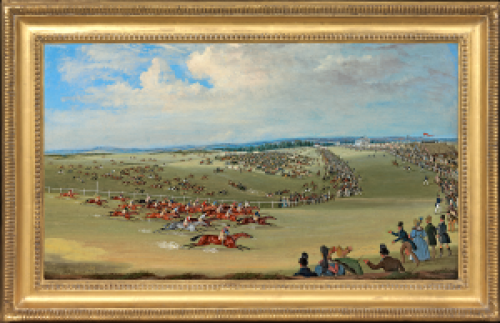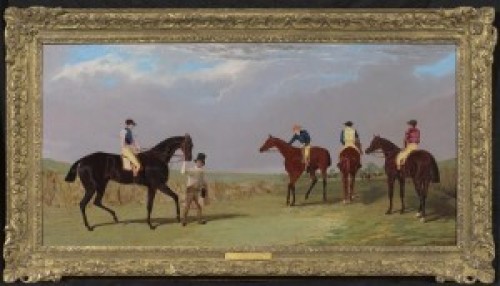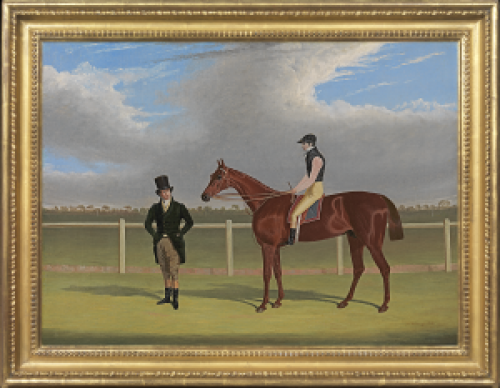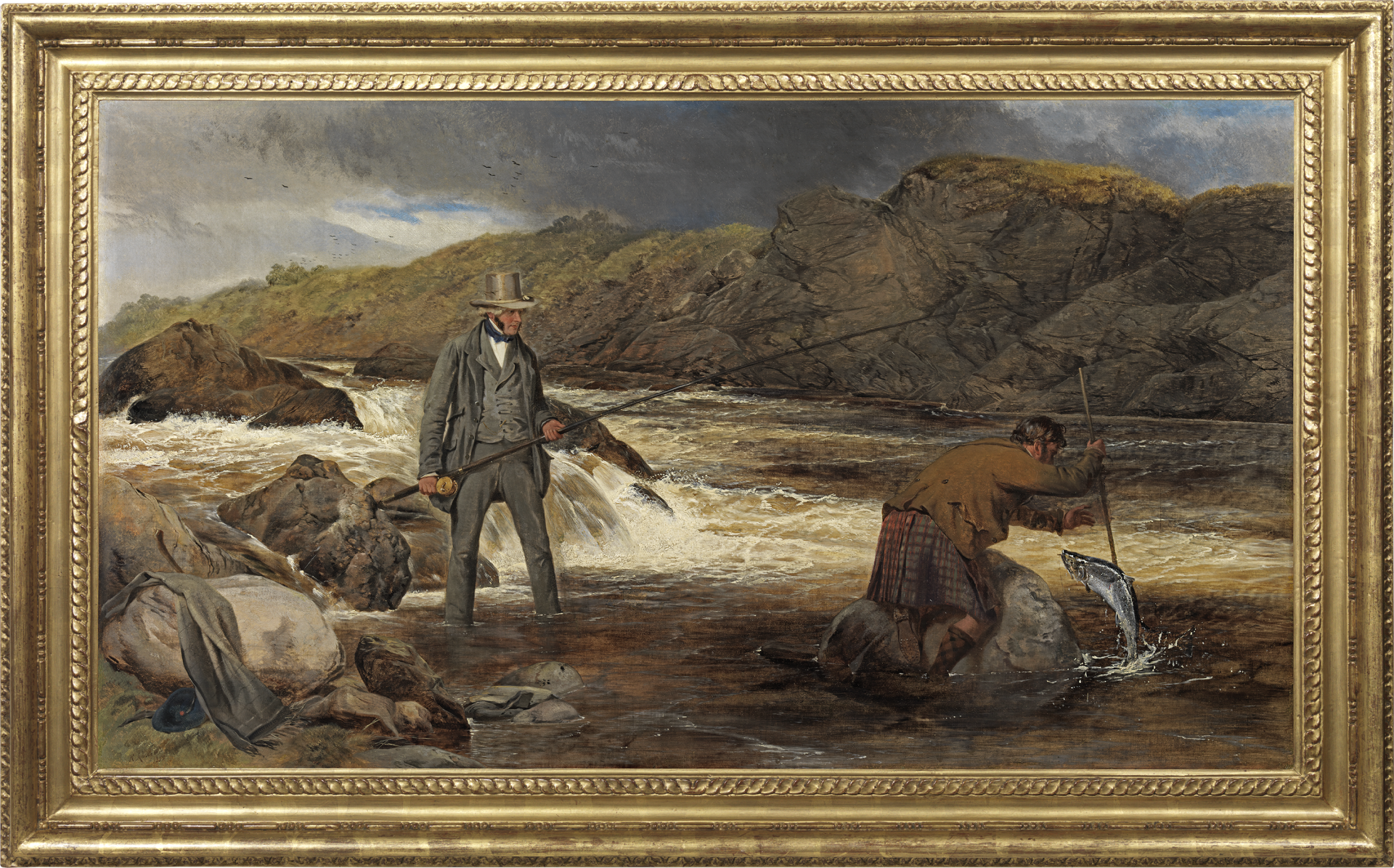RICHARD ANSDELL
Liverpool 1815 - 1885 Farnborough
Ref: BZ 208
Harrison Blair fishing on the Spean
Signed and dated lower left: Ansdell / 1855
Oil on canvas: 27 3/8 x 48 ¼ in / 69.5 x 122.6 cm
Frame size: 34 ½ x 55 in / 87.6 x 139.7 cm
Provenance:
Painted for Harrison Blair;
Major FE Harrison;
Peter Baily, by 1974;
by descent in a private collection, UK
Exhibited:
London, Leicester and Liverpool, The Arts Council of Great Britain, British Sporting Painting 1650-1850, 1974, no.202
London, Sotheby’s, The British Sporting Heritage, a Loan Exhibition of Works of Art, 19th December 1984-18th January 1985, no.275
This painting is remarkable both for its unusual subject, salmon fishing, and for the fact that it has descended in the family of the man that it depicts, Harrison Blair. It originally belonged to the godfather of the last owner’s grandfather. Harrison Blair, here shown fishing on the River Spean, was the godfather’s great-uncle.
Harrison Blair was a great friend of Richard Ansdell, so much so that two of Ansdell’s sons were named Harry Blair Ansdell. The first son died of croup in his infancy (the only Ansdell son to die) and the next born was also called Harry Blair Ansdell. He became a printseller.
Harrison Blair (c.1812-1879) was a manufacturing chemist and a prominent figure in Lancashire society. He inherited the Mill Hill bleachworks in Bolton with his brother Stephen, who was Mayor of Bolton 1845-46. In 1841 Harrison Blair incorporated Harrison Blair & Co. at Kearsley near Bolton, producing vitriol and Leblanc soda, which had a wide range of uses in industries from fertilizer making to glass production. He was a founder and Chairman of the Kearsley Gas Works and from 1850 a Magistrate, as well as being the first Chairman of Kearsley Local Board. Blair and his wife were philanthropists, supporting local churches and other causes; Mrs Blair established Workshops for the Blind in Bolton.
Harrison Blair was a near-contemporary of Richard Ansdell and they became firm friends. Ansdell’s eldest son, Thomas Chester Ansdell (1846-1926), became a manufacturing chemist, perhaps because of Blair’s encouragement. Ansdell and Blair were both keen salmon fishermen and took properties on the River Spean in the Highlands of Scotland during the season. The Spean runs in beautiful countryside from Loch Laggan to join the River Lochy at Gairlochy in the Great Glen in the Western Highlands.
Ansdell’s wonderful portrait depicts his friend standing stoically in a pool amongst the rushing waters of the river. He is catching a fine fresh-run salmon with a rod which would have been state of the art at the time – probably a ‘Whippy’ rod of greenheart (a South American hardwood) rather than the earlier ash or oak. Blair is assisted by his ghillie who is kneeling on a wet and slippery boulder gaffing the salmon before it is brought in.
Harrison Blair cuts a fine figure in his stylish clothes, grey top hat, starched wing collar and gold fob watch, standing unperturbed in the icy waters. The ghillie is beautifully depicted as he crouches over the boulder in his kilt, getting uncomfortably wet, jostling with the writhing salmon; his Tam O’Shanter and plaid draped over the rocks in the foreground. The salmon itself is a masterpiece of energy.
This is a dramatic painting of a typical, fast-flowing Scottish river, carving its way between banks of glowering rock with the ever-present threat of heavy rain, a hopeful touch of blue in the sky and the wheeling flocks of birds, so typical of Ansdell. The water is depicted with huge strength and purpose, from the spray dashing against the rocks to the tremendous power of the current creating eddying surf which can almost be heard. The water is mesmeric in its complexity: it is obvious that Ansdell enjoyed himself immensely when he painted this unique study of his friend.
Information based on an essay by Sarah Kellam, great-great granddaughter of Richard Ansdell.
RICHARD ANSDELL RA
Liverpool 1815 - 1885 Farnborough
Richard Ansdell painted a wide range of animal subjects, sporting scenes and romantic narrative pictures. He was influenced by and rivalled Sir Edwin Landseer in the variety of his subject-matter and the detailed finish of his paintings.
Born in Liverpool, Ansdell trained at the Liverpool Academy, where he was elected President in 1845. He moved to West Kensington in 1847, exhibiting at the Royal Academy from 1840 to 1885 and at the British Institution from 1846 to 1865. Ansdell collaborated with several artists during his career, including John Phillip, with whom he travelled in Spain in 1856; Thomas Creswick, and William Powell Frith, with whom he produced scenes of rural genre. Among Ansdell’s most important patrons were the Earl of Sefton (for whom he painted The Waterloo Cup Coursing Meeting), the Earl of Derby, Earl Spencer and the Marquis of Bute.
In 1861 Ansdell built a large house and studio called Starr Hills outside Lytham. During this period he also spent much time at a lodge on Loch Laggan, where he painted many Highland scenes. Towards the end of his life he lived at Collingwood Tower, Farnborough, Hants, where he died in 1885.
The work of Richard Ansdell is represented in the Victoria and Albert Museum, London; Blackburn Art Gallery; York Art Gallery, Bury Art Gallery and the Yale Center for British Art, New Haven, CT.

